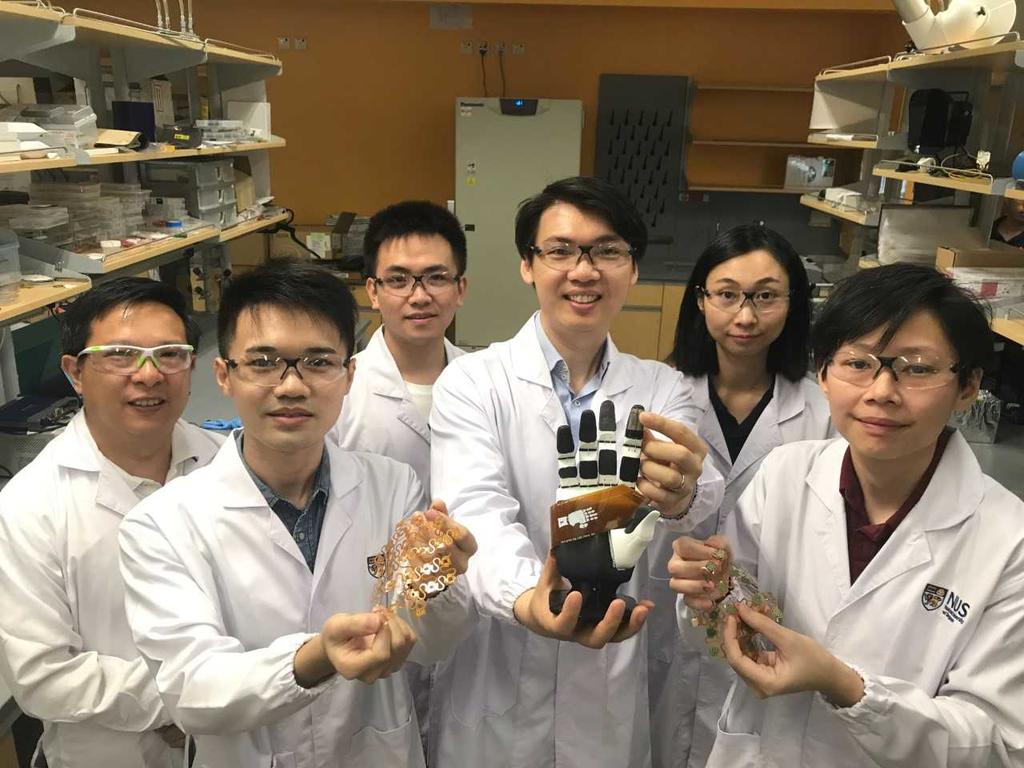

Researchers have developed an ‘electronic skin’ that can process information faster than the human nervous system
Inspired by Star Wars, a team of researchers from the National University of Singapore has developed an ‘electronic skin’ that gives amputees with prosthetics the ability to ‘touch’.
The artificial skin uses more than 100 small sensors and is about 1 sq cm (0.16 square inch) in size.
It has the capacity to recognise 20 to 30 different textures and can read Braille letters with more than 90% accuracy. What’s more impressive is that it can process information faster than the human nervous system.
“So humans need to slide to feel texture, but in this case the skin, with a single touch, is able to detect texture of different roughness” said research team leader Benjamin Tee.
When a person loses a limb the only sensation they feel is “numbness”, but with this technology it could enable them to feel sensations of warmth and softness when holding a hand. It can also detect whether a ball is soft or hard, giving the user the information it needs to determine how hard to hold the object.
The technology is still in the experimental stage, but there had been “tremendous interest” within the medical community.






